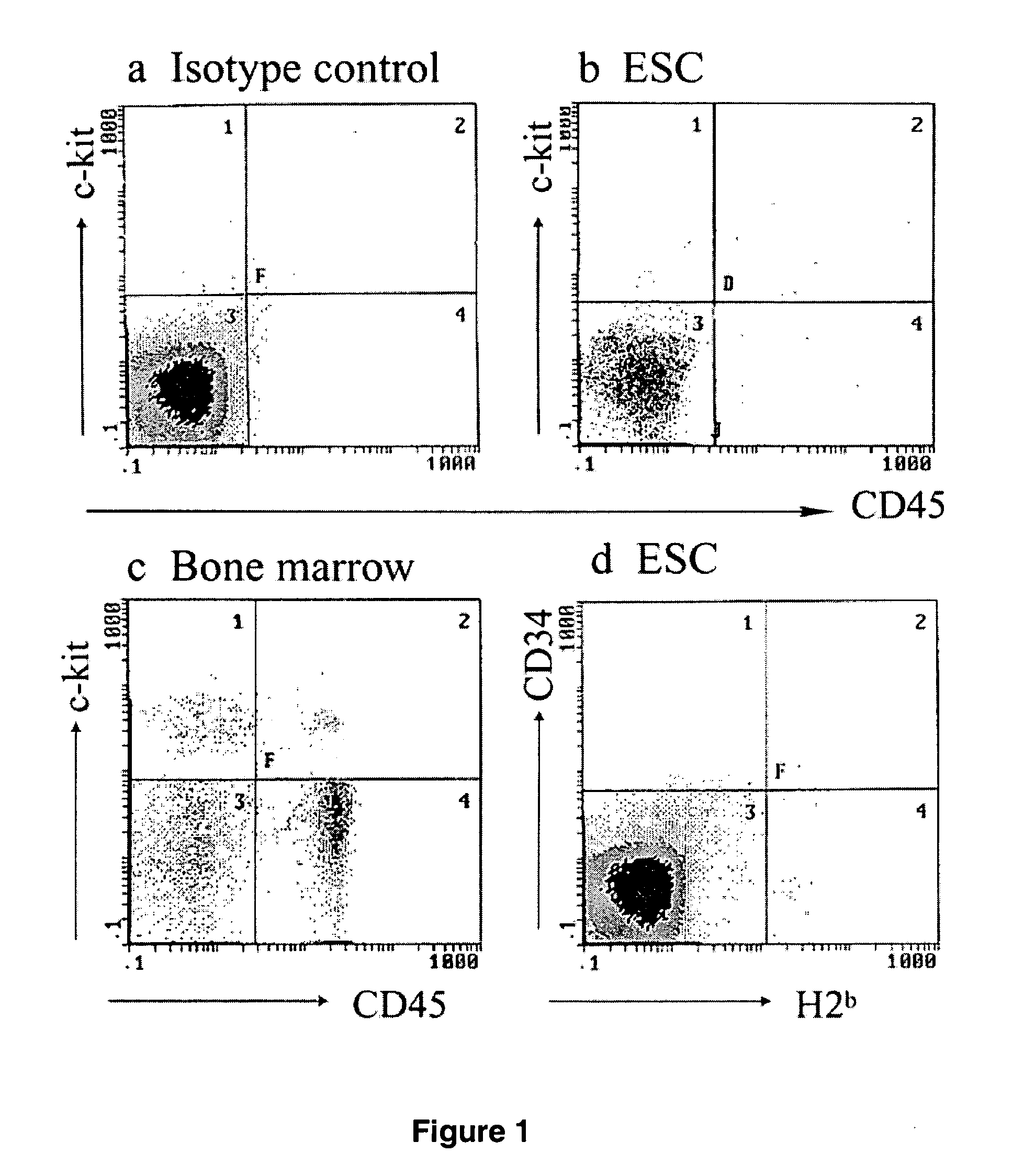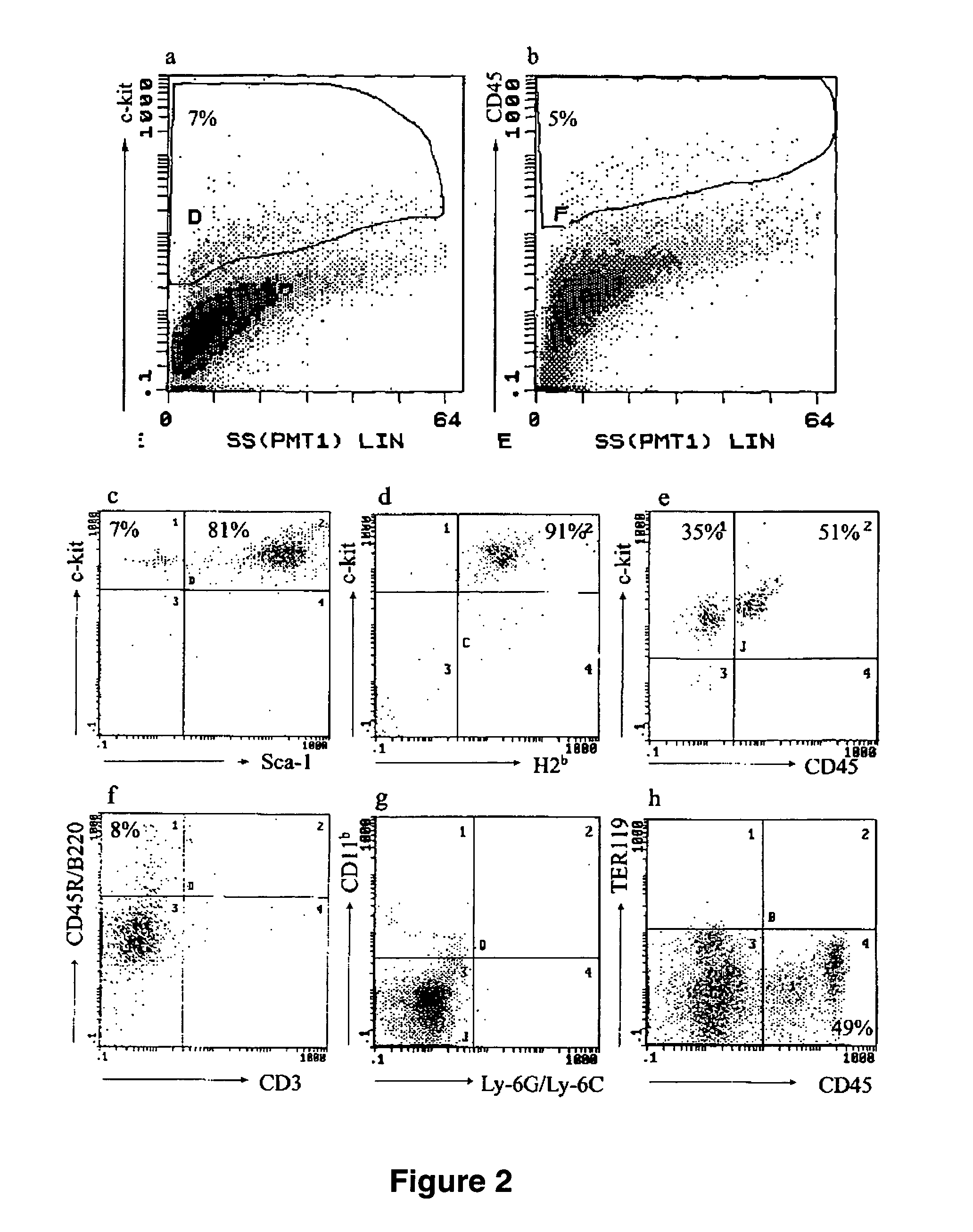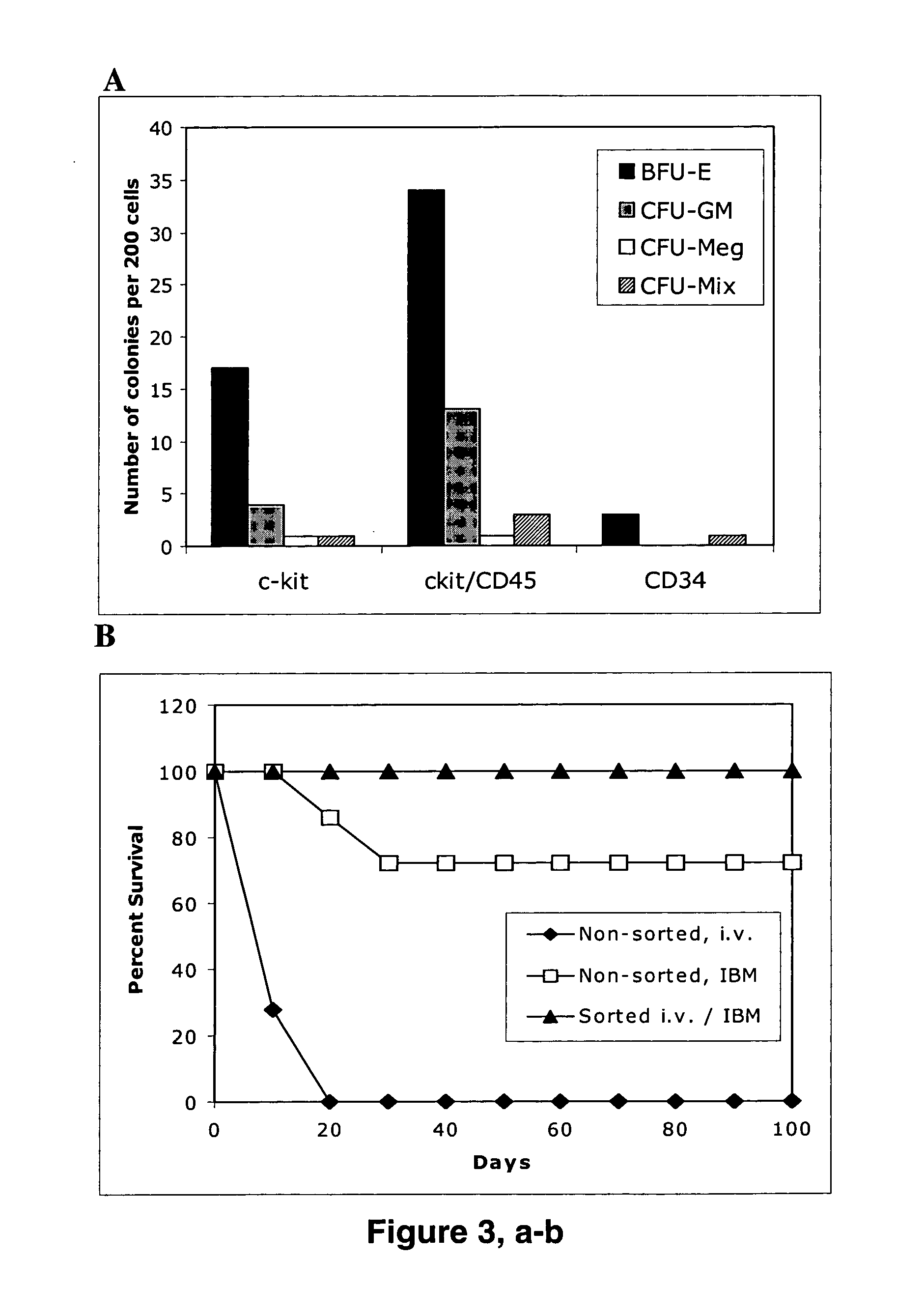Methods and compositions for obtaining hematopoietic stem cells derived from embryonic stem cells and uses thereof
a technology of embryonic stem cells and compositions, applied in the field of methods, can solve the problems of inability to maintain hscs in culture for even relatively short periods of time, inability to graft, and high cost of treatment, and achieve the effect of preventing the rejection of an allogeneic organ and promoting the immunotolerance of a donor
- Summary
- Abstract
- Description
- Claims
- Application Information
AI Technical Summary
Benefits of technology
Problems solved by technology
Method used
Image
Examples
example 1
Injection of Genetically Mismatched, Undifferentiated ESCs into Lethally Irradiated Mice
[0079] Most of the data concerning ESC-derived differentiation is based on in vitro studies (11, 12, 16, 24-27). The question of whether hematopoietic progenitors derived in vitro from mouse ESCs can support in vivo long-term multilineage engraftment remains unanswered (15, 28). Previous reports suggest that ESCs or cells derived from ESCs have a limited capacity to engraft and reconstitute hematopoiesis in vivo (15). Some components of hematopoiesis have also been reconstituted in immune-deficient mice, e.g., SCID or RAG-1-deficient mice (11, 30, 31). However, it has not been previously demonstrated that genetically normal (i.e., nontransduced) ESCs or cells derived from ESCs are capable of reconstituting an intact and functional immune system in normal mice. To investigate these questions, murine ESCs cultured under different conditions were injected into lethally irradiated mice and tested fo...
example 2
Immunophenotype of Ex Vivo Cytokine-Stimulated Hematopoietic Differentiation of ESCs
[0080] To promote ex vivo hematopoietic differentiation, undifferentiated ESCs were cultured in methylcellulose medium by the withdrawal of LIF and the addition of the hematopoietic cytokines SCF, IL-3, and IL-6 for 7-10 d resulting in formation of EB. Previous data suggested that multipotent, long-term, repopulating hematopoietic progenitors might be formed within EB around day 4 after LIF withdrawal (29) and that SCF and CD45 receptors arise around day 8 of EB culture (15). Miyagi et al. (30) reported that ESCs express low levels of the c-kit receptor on their surface, whereas Hole et al. (15) reported that expression of c-kit is absent in ESCs until day 8 of EB culture. Flow cytometric analysis of presorted population revealed that 7% of cultured cells presented the HSC marker c-kit and ˜5% presented the panleukocytic marker CD45 (FIG. 2, a and b). The immunophenotype of c-kit+ CD45+ ESC derived ...
example 3
In Vitro Colony-Forming Unit Formation of Cytokine-Stimulated ESCs
[0081] The in vitro ability of cytokine-stimulated ESCs to form hematopoietic colonies was investigated from sorted ESC-derived hematopoietic progenitor cells expressing CD34, c-kit, CD45, or both c-kit and CD45. Enriched by flow cytometry, cell subsets were plated in prepared methylcellulose-based cultures supplemented with SCF, IL-3, IL-6, and / or recombinant erythropoietin. Total progenitor frequency of colony-forming units CFU-GM, BFU-E, CFU-Meg, and CFU-Mix, was scored after 12 d of culture (FIG. 3a). The highest plating efficiency from cytokine-stimulated ESCs was observed with dual positive c-kit+ CD45+ cells that formed the largest number of CFU-GM, BFU-E, CFU-Meg, and CFU Mix colonies (FIG. 3 a). As there is no consensus regarding the immunophenotypic features of murine ESC-derived HSCs, we chose the phenotypic markers c-kit / CD45 for the subsequent purification of high efficiency repopulating cells, based on ...
PUM
| Property | Measurement | Unit |
|---|---|---|
| total volume | aaaaa | aaaaa |
| cell surface specific | aaaaa | aaaaa |
| fluorescence activated cell sorting | aaaaa | aaaaa |
Abstract
Description
Claims
Application Information
 Login to View More
Login to View More - R&D
- Intellectual Property
- Life Sciences
- Materials
- Tech Scout
- Unparalleled Data Quality
- Higher Quality Content
- 60% Fewer Hallucinations
Browse by: Latest US Patents, China's latest patents, Technical Efficacy Thesaurus, Application Domain, Technology Topic, Popular Technical Reports.
© 2025 PatSnap. All rights reserved.Legal|Privacy policy|Modern Slavery Act Transparency Statement|Sitemap|About US| Contact US: help@patsnap.com



